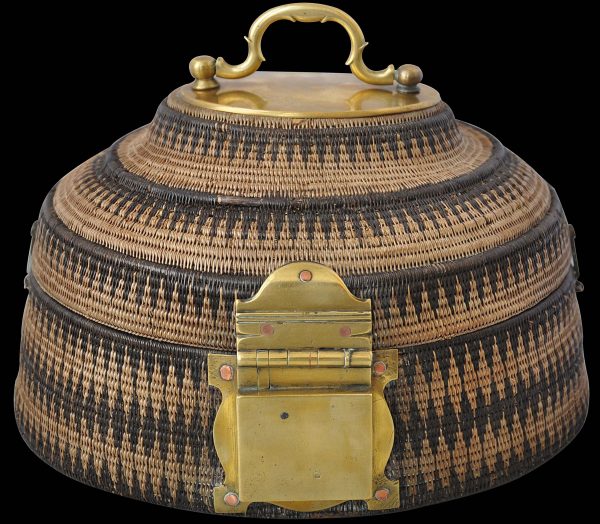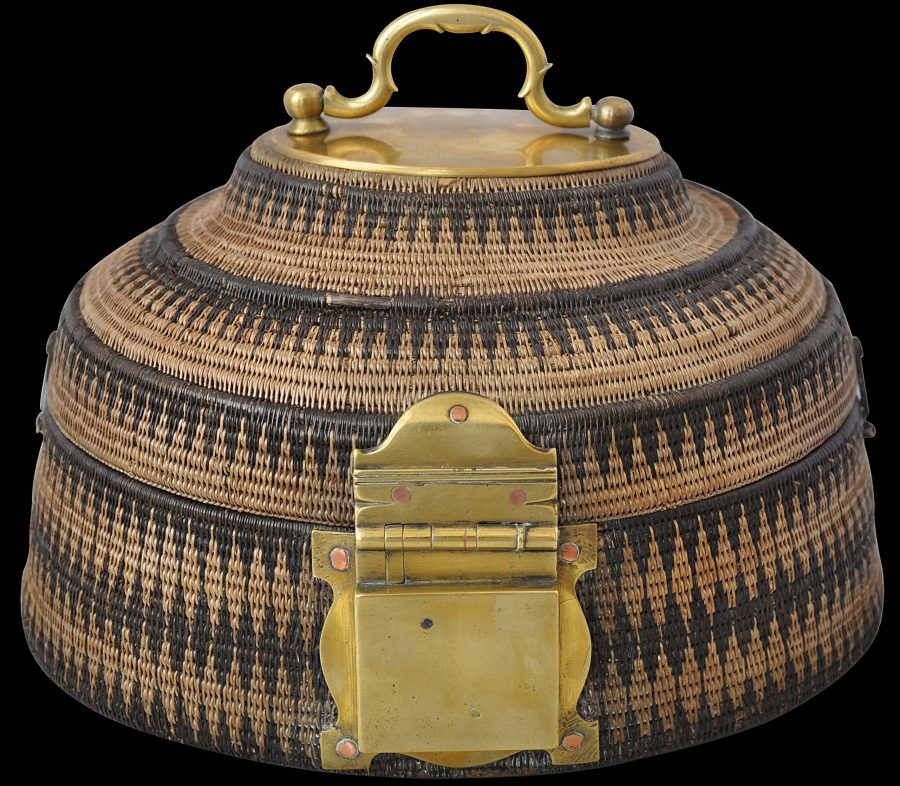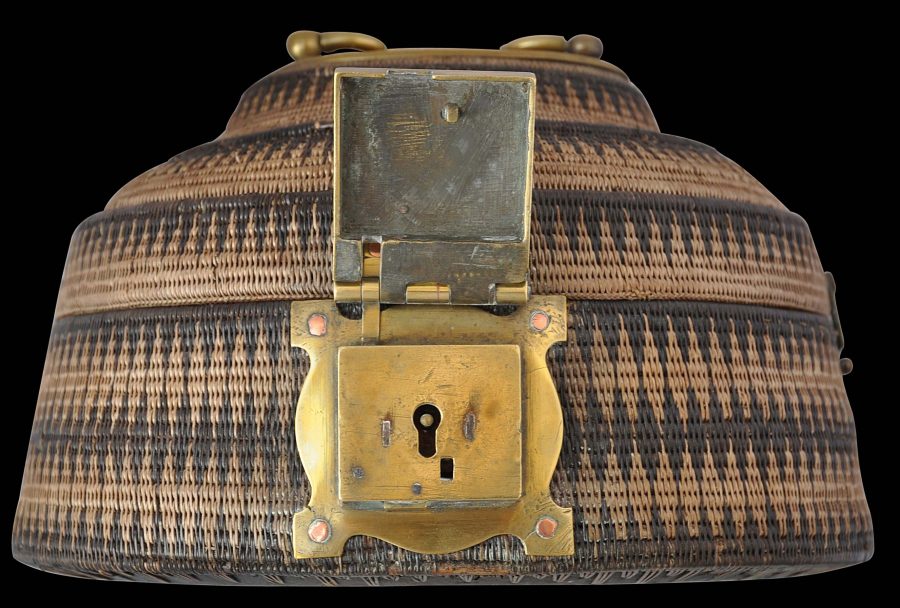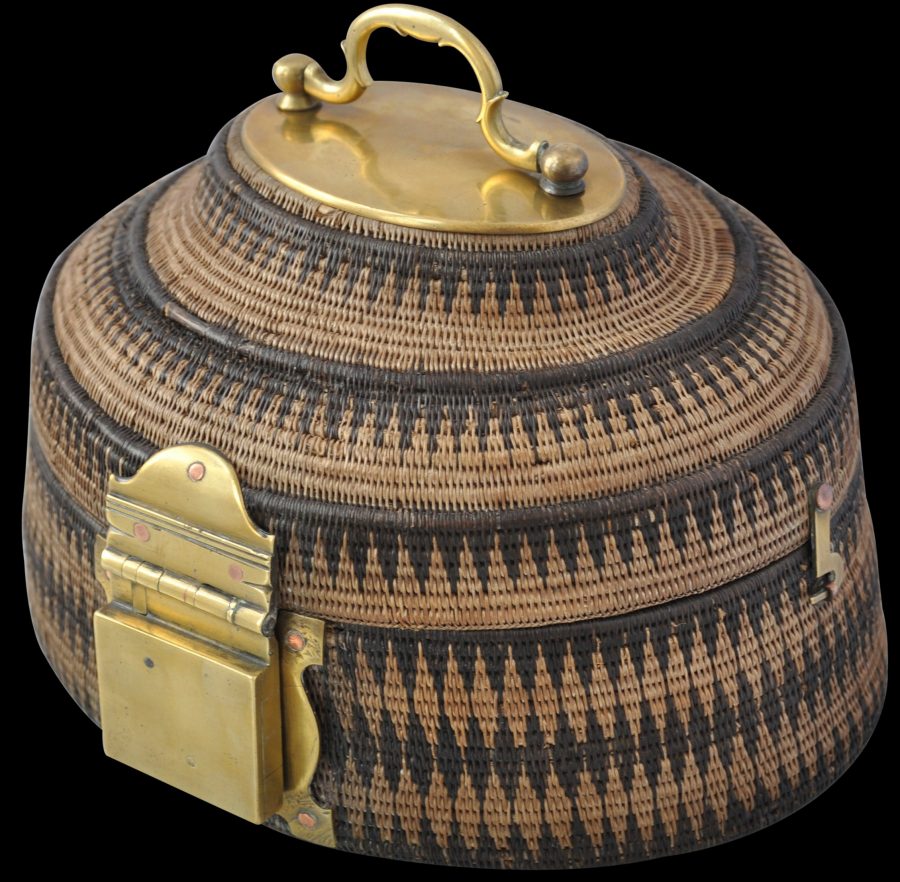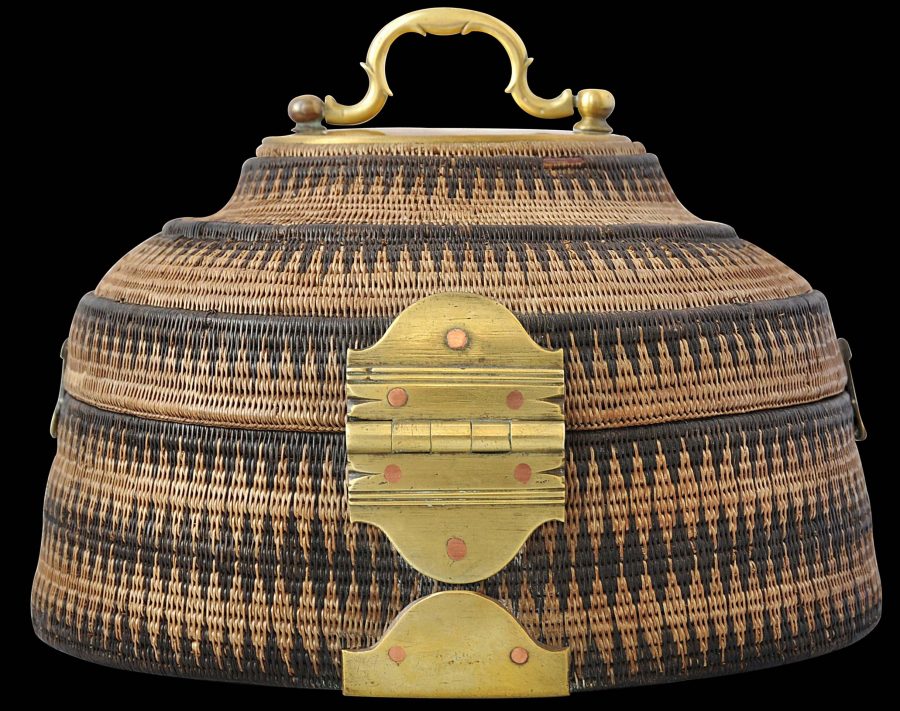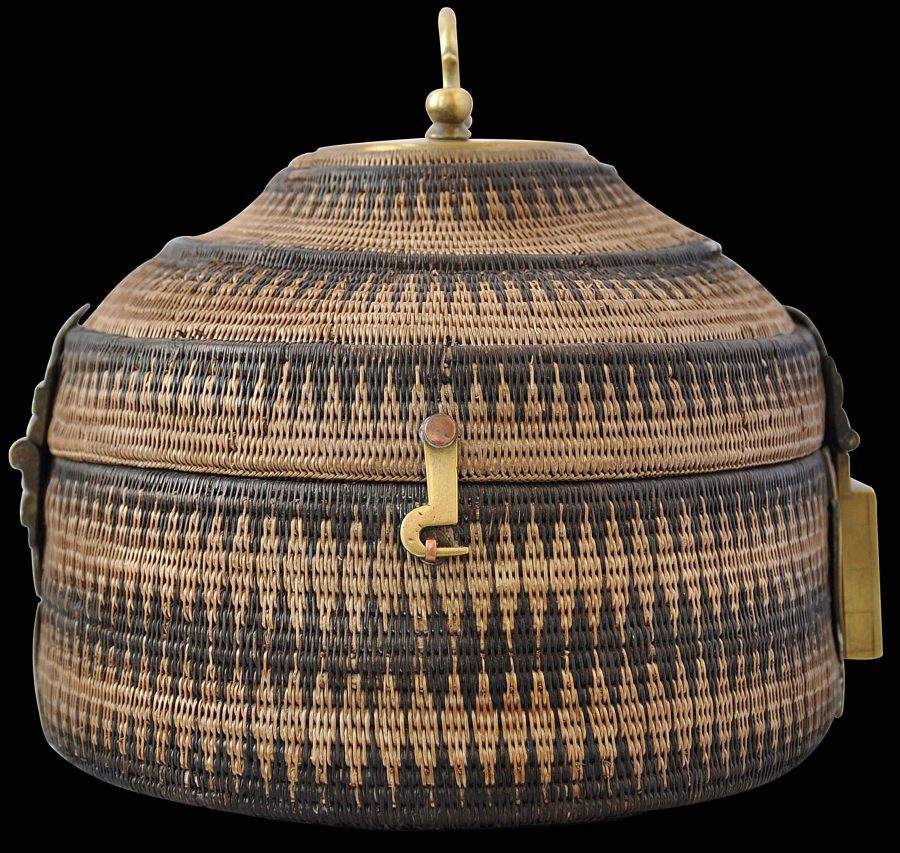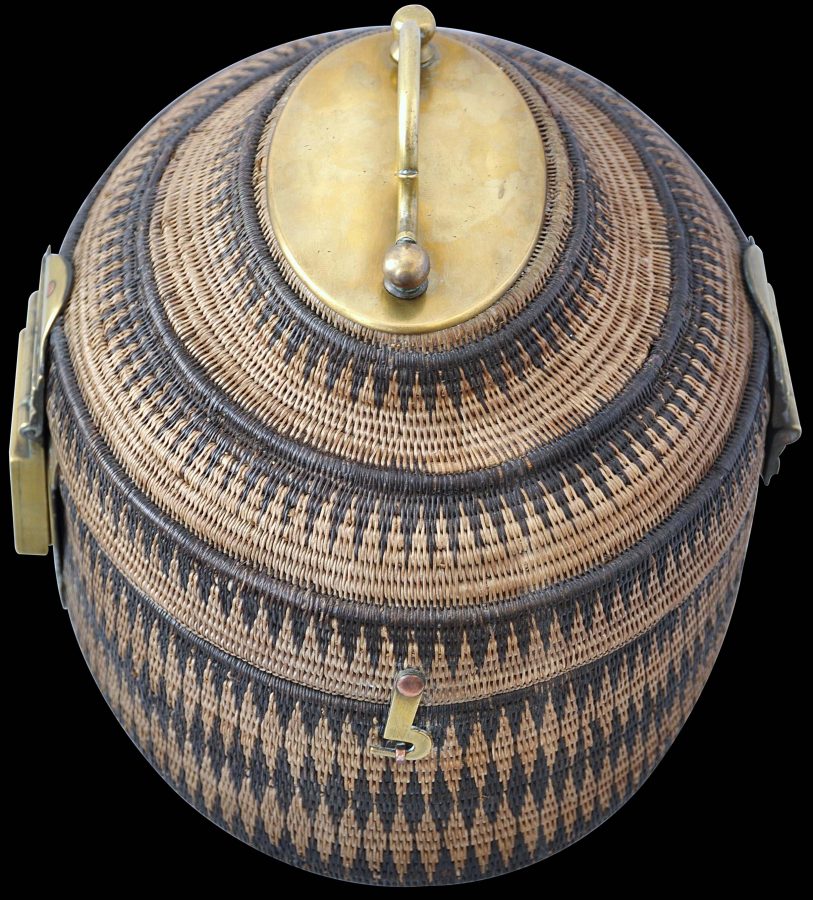This cane basket known as a vel-pettiya with brass mounts held in place with copper studs is typical of such baskets produced in the Kingdom of Kandy in central Sri Lanka. They were made for members of the Kandyan aristocracy and were used to store jewellery and keepsakes. This example includes a hidden locking mechanism.
The basket is made from two types of tightly woven cane over a wooden base. The brass mounts comprise a prominent hinge plate at the back and a matching lock, plate and lock cover at the front; hooks and eyelets on the sides; and a prominent handle and plate to the top. The lock is kept hidden by a lock cover. The lock appears to be functioning although the key no longer is present. Coomaraswamy (1956, p. 200) suggests that such locks and lock plates show European influence.
Similar baskets but with less elaborate mounts were produced in Indonesia. It is possible that colonial Portuguese and Dutch administrators introduced this form to Indonesia from the Kandyan Kingdom in the eighteenth century.
The condition of this basket is excellent given its age – there are only minor losses to the caneware. Overall, it is a superb example.
See Coomaraswamy (1956, plate XLIIIA) for an example of a vel-pettiya with brass mounts.

Above: An example with brass fittings in the collection of the National Museum of Kandy, Sri Lanka. Photographed in 2011.
References
Coomaraswamy, A.K., Mediaeval Sinhalese Art, Pantheon Books, 1956 reprint of the 1908 edition.


